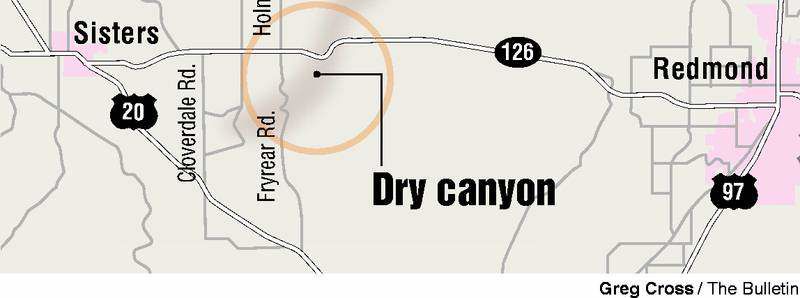Discovering Dry Canyon
Published 4:00 am Wednesday, February 20, 2008

- Discovering Dry Canyon
This year marks a chronologically significant milestone in my life.
Since my pal Mark Quon is staring down the big Five-O right along with me, we’re planning an early summer backpack trip into the bear-infested mountains of northwestern Montana. We have this (vague) idea that we’ll cover 50 miles in the Northern Rockies, which will somehow prove to us that 50 is actually the modern equivalent of, say 48.
Trending
What we’re actually doing is getting all worked up over the prospect of spending several days in a wilderness known for its generous bounty of wildlife, including wolf, wolverine, mountain goat, black bear and a remnant population of Ursus arctos horribilis — the North American griz. There are many lakes, too, most teeming with large, voracious cutthroat and rainbow trout. Did I mention dumb? The trout up there are easily duped, or so I’m told.
It’s true. Half the fun is planning and anticipating and buying new backpacks and stuff. And, such a trip gives us a bona fide excuse to go hiking as often as possible. To get in shape, to prepare, to get outside on a regular basis and enjoy the best Central Oregon has to offer.
So we were pleasantly surprised to discover an unobtrusive Bureau of Land Management trailhead off of Fryrear Road, just south of state Highway 126 between Redmond and Sisters. The trail leads to a series of doubletrack dirt trails, some of which have been churned up by motorcycles and ATVs. We also saw evidence that horses had passed this way.
We walked straight ahead from the parking lot and turned south to follow a fence line. At the end of the fence line, we headed left into a narrow canyon that still protected patches of icy snow. It was here that we stashed two bottles of Mirror Pond Pale Ale (buried neck deep in a bed of snow inside the crotch of a burned out stump). Planning ahead.
That’s Dry Canyon, the upper end of the big gorge you see when driving by on the highway between Redmond and Sisters. We paused to take advantage of a break in the junipers and a photo- perfect glimpse of the snow-draped Cascades to the west. Soon, the country opened up a little and we were hiking gradually downhill with a rock wall and rimrock to our left.
This is juniper country, with a ponderosa pine thrown in here and there for variety.
Trending
Despite myriad tracks, we encountered just one off-road vehicle last Friday, a jeep at the bottom end of the hike, close to the highway. It was pretty muddy, so the driver opted to crawl back up and out.
On the way back up canyon, I heard (but didn’t see) a canyon wren. I’m no expert, but I listened to the recorded call on the Internet and I’m pretty certain, even though it’s a little early for them.
The Cornell Lab of Ornithology confirms that the canyon wren is aptly named.
“Found throughout the arid mountain country and canyonlands of western North America, the canyon wren nests and feeds in narrow rock crevices,” according to the Cornell Web site. “Often, it announces its presence by its beautiful and distinctive song, a loud cascade of musical whistles.”
A couple more cool things I learned about the canyon wren from the Cornell Lab site: “The vertebral column is attached higher on the skull than it is on most birds,” which allows a foraging canyon wren to thrust its bill forward into tight crevices without bumping its head. Also, researchers believe the canyon wren doesn’t drink water. Rather, it gets the water it needs from its insect prey.
Good thing. This canyon is aptly named as well.
In all, we covered about five miles, out and back, trying to avoid the snowmelt mud when and where we could. This is a nice hike on a weekday and when so many spots to the west are snowbound.
There were no fish in this canyon and we didn’t see any bear, but it was good to be out on a 60-degree winter’s day.
We ferreted out the cold beer, sat on a couple of rocks and talked about Montana, the merits of pepper spray in warding off marauding brown bears and big stupid trout. And I thought about the canyon wren.
That bird was exactly where it belonged. And so, for a few hours last week, were we.
If you go
Getting there: From Redmond, head west toward Sisters on state Highway 126. Turn left on Fryrear Road (it’s Holmes Road to the right) and drive about two miles to the trailhead parking area on the left.
Difficulty: Moderate. It’s about five miles to the old bridge supports next to the highway and back.








